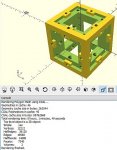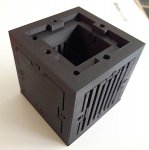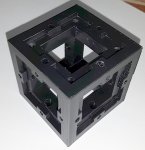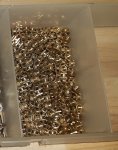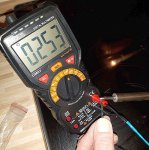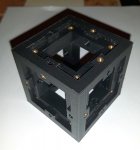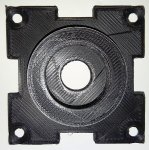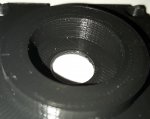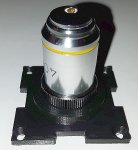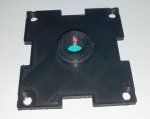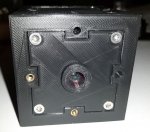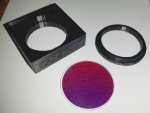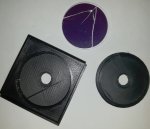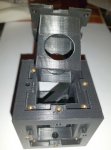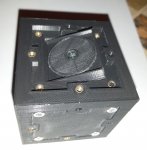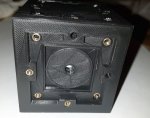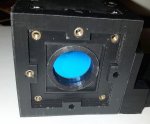Hello,
In the next step, I created the central component, the beam splitter.
For this I have adapted an element from the already described library according to the dimensions of the existing dichro splitter.
In principle, it is the lower of the six side walls with a 45 ° vertical inward holder, placing this round dichro exactly in the middle of the cubus.
The dielectrically coated and reflecting surface lies exactly in the cube diagunal and an additional printed ring holds the filter in this socket.
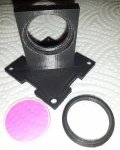
The sepcial optical properties of this dichro can already be recognized by comparing reflected light and transmitted light.
In incident light is red and in transmitted light as the function is green.

I bought the filter in the ebayshop from the already named distributor bjomejag, here you get filters of all kinds from the product range of omega optics at fair prices. These often come from overproductions and are therefore affordable for hobby buyers. For many of you certainly interesting, this company is in the US .... I had to pay the corresponding duty.
The dichro described here is according to the original description:
"Optical Filter Dichroic 540DRLP 25mm dia X 1mm Beam Splitter @ 45 R95% @ 532nm.
This filter is NOS from Omega Microscopy line.
The filter seperate a band of Green by reflecting it at the right angles to the incidence light,
while transmitting nearly all the Green / Yellow and Red above 550nm.
The filter is ideal for use with a 532 Laser with 95% + R in the S plane,
and 70% in the P plane.
Transmission of 555 to 700 nm in the plane is very efficient.
(Optimized for the S plane polarization in reflection).
The filter makes a very good epi-illuminator of Green excitation,
onto a sample, where the emitted light is retro-transmitted through this filter.
filthe specifications follow:
Reflection band 475 to 540 with average of 90.9%,
Transmission band 550 to 750 nm with an average of 90%,
Size 25 mm 1mm thick, Substate material is Borosilica glass.
Original cost $ 150 "
BUT .... I got this for net US $ 29.50 ++.
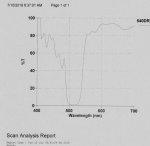
From below, this dichro holder sidewall is now inserted into the cube and attached to the cube with four countersunk screws DIN 965 stainless steel V2A TORX M3 x 16 mm.

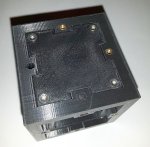
The later mounted laser hits this dichro and is polarized reflected in 90 °, the 532nm used here meets with about 300 mw through an objetiv (description follows later) on the medium to be examined and then as a reflection along with the emulated raman stroke and antistroke
again on this dichro, here again 50% of the now unwanted 532nm are discharged and the desired signal is left.
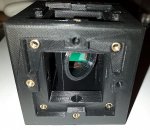
The dimensions of the vertical 45 ° dichro holder I then designed so that I still have some space for another component between this holder and the cubus inner wall 30x30mm ... (will follow)
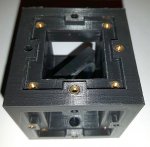
The next component described will be the side wall with the lens holder.
greeting
Bernd
PS.: I hope me englisch is not to bad ......




